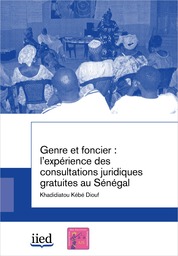Poverty and the Policy Response to the Economic Crisis in Liberia
The purpose of this study is to provide in one place a set of papers that were written at various points in time over the last four years on poverty and the response to the recent economic crisis in Liberia. More precisely, the objective of the study is twofold. First it is to provide a basic diagnostic of both consumption-based poverty and human development (especially education and health) in the country using the 2007 CWIQ (Core Welfare Indicators Questionnaire) survey.





